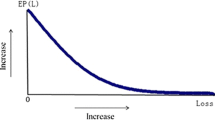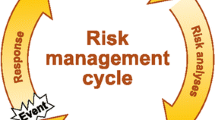Abstract
In recent years, greater attention has been given to advancing the theory and practice of assessing risk from multiple hazards. Most approaches calculate multi-hazard risk by aggregating risk scores for individual hazards and ignore the combined exceedance probability of multiple hazards. We address this problem by developing a simple and practicable multi-hazard risk assessment method that uses information diffusion theory to overcome the difficulty posed by a lack of historical or spatial data on natural hazard-induced loss. China’s Yangtze River Delta region is used as a demonstrative example, and the exceedance probability distribution of multi-hazard risk to human life was calculated using natural hazard disaster life loss data for 1950–2010. Multi-hazard risk to human life is mapped as exceedance probability at different mortality rates and loss at different risk return periods using a geographical information system. Results show that Hangzhou and Ningbo are at a relatively high risk from multiple natural hazards, and Shanghai is at a relatively low risk. For scenarios of 10-, 20- and 50-year risk return periods, there are no significant changes in the risk rank of the cities; Hangzhou, Ningbo and Zhoushan are at a relatively high risk, while Shanghai is at a relatively low risk.








Similar content being viewed by others
References
ARMONIA PROJECT (2006) Applied multi-risk mapping of natural hazards for impact assessment. Report on new methodology for multi-risk assessment and the harmonization of different natural risk maps. Armonia, European Community, Genova (Italy)
Arnold M, Chen RS, Deichmann U et al (2006) Natural disaster hotspots case studies. World Bank, Washington
Bell R, Glade T (2004) Multi-Hazard analysis in natural risk assessments. In: Brebbia CA (ed). Proceedings of the 4th International Conference on Computer Simulation in Risk Analysis and Hazard Mitigation; September 26–29, 2004, Rhodes, Greece.WIT Press, Southampton
Benjamin JR, Cornell CA (1970) Probability, statistics, and decision for civil engineers. McGraw-Hill, New York
Bonachea J, Remondo J, Terán D, Díaz JR, González-Díez A, Cendrero A (2009) Landslide risk models for decision making. Risk Anal 29(11):1629–1643
Dilley M, Chen RS, Deichmann U et al (2005) Natural disaster hotspots: a global risk analysis. World Bank, Washington, D.C.
EM-DAT (Emergency events database) (2010) The OFDA/CRED International Disaster Database. Université Catholique de Louvain, Brussels. http://www.cred.be/emdat. Accessed December 2010
FEMA (2004) Using HAZUS-MH for risk assessment. http://www.fema.gov/plan/prevent/hazus/index.shtm. Accessed October 2010
Fernández B, Salas J (1999) Return period and risk of hydrologic events I: mathematical formulation. J Hydrol Eng 4(4):297–307
Gao Q, Ma Z, Zhang Y et al (2007) Natural disaster assessment. Meteorological Press, Beijing
Ge Q, Zhou M, Zheng J et al (2008) Integrated assessment of natural disaster risk to China. Science Press, Beijing
Grünthal G, Thieken AH, Schwarz J et al (2006) Comparative risk assessment for the city of cologne-storms, floods, earthquake. Nat Hazards 38:21–44
Gumbel EJ (1958) Statistics of extremes. Columbia University Press, New York
Hall JW, Dawson RJ, Sayers PB et al (2003) A methodology for national-scale flood risk assessment. Proc ICE-Water Marit Eng 156(3):235–247
Hsu WK, Chiang WL, Chen CW (2013) Earthquake risk assessment and optimal risk management strategies for hi-tech fabs in Taiwan. Nat Hazards 65(3):2063–2076
Huang C (1997) Principle of information diffusion. Fuzzy Set Syst 91(1):69–90
Huang C (2000) Demonstration of benefit of information distribution for probability estimation. Signal Process 80(6):1037–1048
Huang C (2005) Risk assessment of natural disaster theory and practice. Science Press, Beijing
Huang C, Liu X, Zhou G, Li X (1998) Agricultural natural disaster risk assessment method according to the historic disaster data. J Nat Disasters 7(2):1–9
Khatsu P, van Westen CJ (2005) Urban multi-hazard risk analysis using GIS and remote sensing: a case study from Kohima Town, Nagaland, India. In: proceedings of the 26th Asian Conference on remote sensing, November 7–11, 2005, Hanoi, Vietnam
Liu H (1990) Wind engineering: a handbook for structural engineering. Prentice Hall, New Jersey
Liu B, Xu W (2012) Comprehensive multi-risk assessment of natural hazards to human life in the Yangtze River Delta region. J Nat Disasters 21(3):56–63
Mosquera-Machado S, Dilley M (2009) A comparison of selected global disaster risk assessment results. Nat Hazards 48:439–456
Munich Reinsurance Company (2003) Topics—annual review: natural catastrophes 2002. Munich Re Group, Munich
Okuyama Y (2009) Critical review of methodologies on disaster impact estimation. Background paper as an input into the Joint World Bank—UN assessment on the economics of disaster risk reduction, Chapter 2—Measuring diasters’ many effects. https://gfdrr.org/node/284. Accessed 01 July 2013
Parzen E (1962) On estimation of a probability density function and mode. Ann Math Stat 33(3):1065–1076
Rosenblatt M (1956) Remarks on some nonparametric estimates of a density function. Ann Math Stat 27(3):832–837
SCEMDOAG (South Carolina Emergency Management Division Office of the Adjutant General) (2006) State of South Carolina hazards assessment 2005. University of South Carolina, South Carolina Emergency Management Division Office of the Adjutant General, Hazards Research Lab, Department of Geography, South Carolina (US)
Schmidt J, Matcham I, Reese S et al (2011) Quantitative multi-risk analysis for natural hazards: a framework for multi-risk modeling. Nat Hazards 58:1169–1192
Schmidt-Thomé P (2006) The spatial effects and management of natural and technological hazards in Europe. European Spatial Planning and Observation Network (ESPON) project 1.3.1, Geological Survey of Finland, Luxembourg. http://www.preventionweb.net/english/professional/publications/v.php?id=3621. Accessed 01 July 2013
Shi P (2002) Theory on disaster science and disaster dynamics. J Nat Disasters 11(3):1–9
Stedinger JR, Vogel RM, Foufoula-Georgiou E (1992) Frequency analysis of extreme events. In: Maidment DR (ed) Handbook of hydrology. McGraw-Hill Inc, New York
Thierry P, Stieltjes L, Kouokam M et al (2008) Multi-hazard risk mapping and assessment on an active volcano: the GRINP project at Mount Cameroon. Nat Hazards 45:429–456
van Westen C, Montoya A, Boerboom L, Badilla Coto E (2002) Multi-hazard risk assessment using GIS in urban areas: a case study for the city of Turrialba, Costa Rica. In: Proceedings of the regional workshop on best practices in disaster mitigation: lessons learned from the Asian urban disaster mitigation program and other initiatives, Bali, Indonesia, pp. 120–136
Wang J, Shi P, Yi X et al (2008) The regionalization of urban natural disasters in China. Nat Hazards 44:169–179
Wipulanusat W, Nakrod S, Prabnarong P (2009) Multi-hazard risk assessment using GIS and RS applications: a case study of Pak Phanang Basin. Walailak J. Sci. Tech 6(1):109–125
Wood M, Vetere AL, Mushtaq F (2003) Management of natural and technological hazards in Central and Eastern European Candidate countries (PECO). Fifth Framework Programme of Research and Technological Development Project Report. Joint Research Centre, European Commission, Ispra (Italy)
Author information
Authors and Affiliations
Corresponding author
Rights and permissions
About this article
Cite this article
Liu, B., Siu, Y.L., Mitchell, G. et al. Exceedance probability of multiple natural hazards: risk assessment in China’s Yangtze River Delta. Nat Hazards 69, 2039–2055 (2013). https://doi.org/10.1007/s11069-013-0794-8
Received:
Accepted:
Published:
Issue Date:
DOI: https://doi.org/10.1007/s11069-013-0794-8




